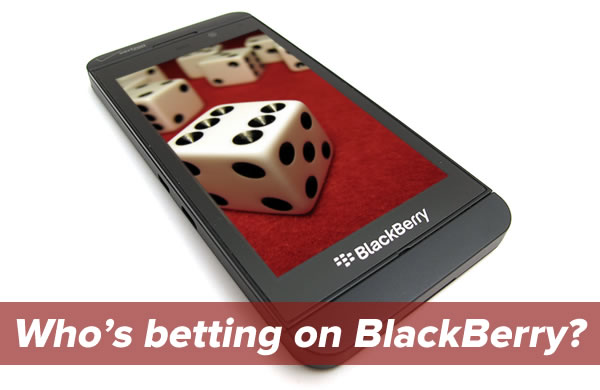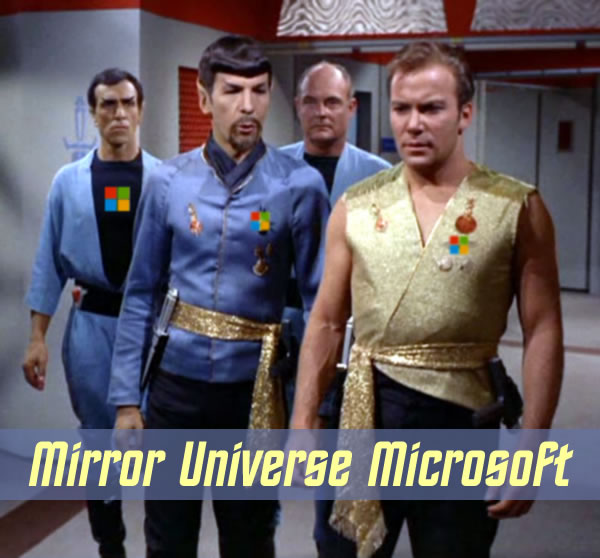Chart by Bruno Oliveira.
Click the graph to see it at full size.
File this under “It’s funny because it’s true.”
Chart by Bruno Oliveira.
Click the graph to see it at full size.
File this under “It’s funny because it’s true.”
![]()
Perhaps you’ve heard of the recent deal in which Facebook acquired WhatsApp for $19 billion — that’s close to the estimated enterprise value of Sony — and are now asking the question “What’s WhatsApp?”. If you were imagining that it was some life- or paradigm-changing application, you may be surprised to find out that it’s an instant-messaging service that lets you send text, still pictures, video, and audio messages to your friends on a host of platforms. From a purely functional point of view, that’s all there is to it.
What sets WhatsApp apart, according to the Sequoia Capital blog, are four numbers:
No Ads! No Games! No Gimmicks!: WhatApp’s mantra, taped to founder Jan Koum’s desk.
Photo from Sequoia Capital’s blog. Click to see the source.
Strategy consultant Benedict Evans, who just started a new gig at A16z — that’s the in-the-know shorthand, URL , and Twitter handle for the venture capital firm Andreesen Horowitz — writes that if you look closely at the deal, it explains a lot about where mobile social apps are headed:
WhatsApp founder Jan Koum signing the acquisition deal on the door of the office where he used to collect welfare checks.
Picture via Forbes; click to see the source.
And finally, there are some lessons to be gleaned from the story of WhatsApp cofounder Jan Koum, although they could be summarized as “hustle and hard work”, combined with the right amount of luck. It’s covered quite well in this Forbes exclusive.

The thesis of the TechRepublic article Avoid using a one-size-fits-all BYOD security policy is that you shouldn’t use a single BYOD policy for everyone in your company. While a single policy is the simplest to implement, it fails in the way that a blunt tool used for every purpose does, and fails to balance the needs of information security with the people’s productivity needs.
In InformationWeek, Paul Waterhouse compares BYOD to Botox. He points out these similarities:
Like Botox, BYOD is powerful and can be poisionous, so it has to be applied judiciously.
BYOD itself doesn’t fit all corporate scenarios. If your line of work:
….then you may be in a situation where BYOD may not be a suitable option, and corporate-owned devices might be more appropriate.
 COPE — short for Corporate-Owned, Personally Enabled — is a term coined in 2012 by Philippe Winthrop of the Enterprise Mobility Forum. “COPE is the mirror opposite of BYOD,” said Winthrop in the TechTarget article BYOD alternatives emerge as tablets outship PCs. “It’s taking the benefits of the consumerization of IT … while retaining the flexibility for the employer.”
COPE — short for Corporate-Owned, Personally Enabled — is a term coined in 2012 by Philippe Winthrop of the Enterprise Mobility Forum. “COPE is the mirror opposite of BYOD,” said Winthrop in the TechTarget article BYOD alternatives emerge as tablets outship PCs. “It’s taking the benefits of the consumerization of IT … while retaining the flexibility for the employer.”
The COPE approach to mobile devices is modelled after the way many companies already provide laptops for their employees. COPE devices are provided by the employer, with the understanding that the device will be used not just for work, but also for personal use: web browsing, games, music, photos, video and so on. If the devices are seen as desirable, they’ll be considered perks. As company property, there’s usually less resistance to the installation of management tools and software.
Just as one approach to employee devices doesn’t fit all, one device isn’t likely to fit all needs. Microsoft’s Surface Pro tablet comes close to covering the bases of both tablets and computers, but the tiled-UI apps don’t feel as polished as their Android and iOS equivalents, and the Windows experience on Surface still feels unsatisfyingly netbook-like. For the next little while, it looks as though different use cases will call for different devices.
My friend Lee Dale’s company is moving office, and there’s some server and consumer gear that he doesn’t want to take with him and is willing to part with for incredibly low prices. If you’re in the Toronto area, you may want to get your paws on these! Among the items he’s selling are…
Must be picked up near 401 and Warden, to be coordinated on Friday, Feb 28th.
Click the photo to see all the items Lee has for sale.
Must be picked up, ideally we would coordinate pick up on Feb 28th.
Click the photo to see all the items Lee has for sale.
Free if you pick it up.
Click the photo to see all the items Lee has for sale.
Click the photo to see all the items Lee has for sale.

I can’t name any techies who are betting on BlackBerry, but I can point to a few investors on Seeking Alpha who are:
I shouldn’t have to remind you that the bets an investor makes and the bets that a mobile technologist makes are very different creatures. These Seeking Alpha analysts are in the business of getting as much bang out of their investment buck as possible, while readers of this blog are in the business of getting as much functionality out of their tech as possible. These rumbling from the investment community are worth noting because they give some hints as to what BlackBerry may do in the future, which the investors seem to hope is to give up hardware and concentrate on mobile device management and security, which are sure to be a big deal over the next few years.
Nor should I have to remind you that none of this should be construed as investment advice: you pays your money and you takes your chances, and nowhere did we didn’t tell you what to bet on.
Creative Commons photo by Matthew Hurst. Click to see the source.
And now, some links to interesting news and articles about mobile technology as applied to the enterprise…

CIO points to the latest report from Good Technology, the Good Technology Mobility Index Report Q4 2013, which says nearly three-quarters of all activations in the fourth quarter of 2013 among its customer base — more than 5,000 organizations in over 130 countries — were for iOS devices:
iOS accounted for 73% of all Q4 2013 activations of mobile devices using Good’s security platform, followed by Android at 26%, and Windows Phone for the remaining 1%.
When you look at just the tablet activations, Apple’s lead is even more stunning, accounting for 91.4% of tablets with Good’s security solution installed. Android accounts for the remaining 8.6%:

The recent exodus from the BlackBerry platform — one we recommend — has created an opportunity for its rivals to capitalize on. While Apple’s been doing a good job of winning over the enterprise, Samsung is also actively courting the enterprise by pushing features like its Knox security platform and chip-level security. Their efforts seem to be paying off, as the US Army has placed an order of 7,000 devices, and “several thousand” have been ordered by the NSA. Both were originally BlackBerry customers, who chose the platform for its security features; Samsung Knox-enabled devices received approval from the US Department of Defense last year.



There’s a classic Star Trek episode in which a transporter malfunction beams Kirk, McCoy, Uhura, and Scotty to a “mirror universe” where everyone has an evil counterpart. In the mirror universe, the Enterprise isn’t a ship of exploration but war and conquest, the peaceful Federation is the hostile Terran Empire, and Evil Mr. Spock is wearing the dreaded Beard of Evil. If you’ve never seen it before, or are itching to see it again, someone’s posted it on YouTube, and I’m posting it below. Enjoy it before Paramount issues the takedown:
We don’t live in a world of starships and transporters, but Microsoft’s head of PR, Frank X. Shaw, the company’s answer to the Iraqi Information Minister, just might. The latest evidence for this came to light in his response to Farhad Manjoo’s first column for the New York Times.
In his column, How to Survive the Next Wave of Technology Extinction, Manjoo writes:
By following a simple strategy, you can get the most out of the digital world while reducing the chance you’ll be burned by a single wrong move. The point is to minimize the danger of getting locked in to any one company’s ecosystem. The strategy also ensures that you can easily move from device to device without much hassle.
The key is promiscuity. When you decide what to use, you’ve got to play every tech giant against the other, to make every tech decision as if you were a cad — sample every firm’s best features and never overcommit to any one.
Here’s his strategy, boiled down to three lines, which I’ve dubbed “The Manjoo Mantra” and to which I’ve added those lovely graphics that you’ve come to expect from this blog:

Manjoo’s approach is my approach, and if you talk to your local alpha geek, and the odds are pretty good that s/he’s following it as well. From informal nerd gatherings like Toronto’s Rails Pub Nite, to more organized get-togethers like DevTO, to the Toronto and Ottawa offices of the billion-dollar ecommerce business Shopify, to the San Francisco Bay Area, from small startups working out of their kitchens or at cafes, to operations ranging from Stripe to Dropbox to Google (all places where I’ve interviewed in the past little while), it’s the same: hardware from Apple, services from Google, media (and often, other tangible goods from Amazon).
I do keep a Windows 8 machine handy just in case there’s some Windows-specific work to do — a Lenovo T430, which I call the “StinkPad” — but at this point, it’s relegated to secondary tasks such as email, Skype, audio and video playback, torrenting and other joe-jobs so that the main computer, an early 2011 MacBook Pro has maximum free cycles to do real work. At this point in the game, most of my Microsoft user experience comes from my trusty Xbox 360, and the occasional Office document (which I open on the Mac), and doing tech support on aging friends’ and relatives’ aging home computers (a good number of which run Windows XP).

Note that Microsoft doesn’t appear at all in the Manjoo Mantra, and that’s not the sort of snub that Frank X. Shaw, Corporate Vice President of Corporate Communications (that’s right, the word corporate appears in his title twice) gets paid big bucks to take lying down. He published one of those “open letter” replies to Manjoo’s column in Business Insider, which I include in its entirety below:
Dear Farhad,
When you wrote for Slate, you often championed new emerging technologies that offered the tantalizing prospect of disrupting static markets by putting more power and choices into the hands of the people who use them. So naturally, I was a little confused when I opened the paper of record this morning to find that along with switching your employee badge, you seem to have switched sides, and are now a firm supporter of the status quo.
I’m referring, of course, to your advice column for consumers wishing to avoid “tech extinction” by betting on the wrong horse. Surprisingly though, your predictions seem like you are using a rear-view mirror, not a windshield, to look at the road ahead. You recommend sticking with today’s biggest players in the mobile phone, web services and content marketplaces, diversifying purchases between Apple, Google and Amazon accordingly. The core argument for doing this seems to be that none of these companies are likely to go away, and that spreading your bets reduces the risk of “lock in.”
Ironically, these recommendations do lock you in. To expensive hardware with fewer choices and to aggressive content screening and intrusive advertising.
More importantly though you are discounting the possibility that the best antidote to extinction is actually betting on players who are innovating today, not simply monetizing the products they invented 5 or 10 years ago. Your own advice would have had a 2007 smartphone buyer picking a BlackBerry over an iPhone, a 2001 gamer buying a Dreamcast instead of an Xbox, and a 2008 social media user putting all their contacts into MySpace, not Facebook. This would have look like sound advice at those moments in time, but of course it wasn’t. Not because those products were bad, but because they had already peaked, and were no longer focused on solving customer problems in fresh new ways. The best way to avoid extinction is betting on a commitment to evolution through innovation.
So while your readers could take your advice and blend in with the current crowd, we’d encourage you (and them) to take a look at some alternatives that offer even better ways to get things done. And with a cross-platform connected ecosystem that spans the workplace to the living room featuring best in class products like Office, Skype and Xbox, we’re a pretty safe bet too.
fxs
If you have any grasp of the history of tech over the past twenty years, your reaction is probably similar to this:

Think about it:
I admire the bare-knuckle yet tactful way in which Shaw deals with bad PR for Microsoft, but he’s living in an alternate reality. In that parallel universe, I’d have gladly stayed in Microsoft, evangelizing an industry-redefining, disruptive, successful Windows Phone and Surface Tablet.